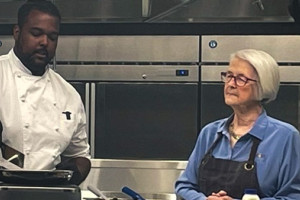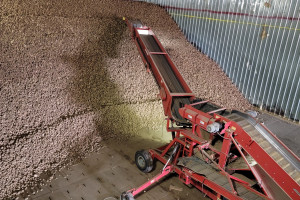Hope and questions spring eternal for Skagit Valley potato grower
MOUNT VERNON, Washington – February 7, 2023 – Despite years of regulatory headwinds, Darrin Morrison always chooses to see a future for agriculture in Washington state.
“We have all these threats, but I still see our way of life as worth having,” Morrison said. “There are days, though, when the light is a little dimmer. You see those bills and you wonder what people are thinking.”
Morrison is a fourth-generation farmer growing fresh market potatoes, cereal grains, grass, and vegetable seeds on a farm started by his family more than 100 years ago. His children have goals to join the family business as fifth generation food producers.
His optimism about the continuation of farms in Washington state is still tempered with questions about bills that have the potential to change the face of his farm and the farms of his neighbors.
“We don’t believe our Skagit system is broken,” Morrison said. “Ecology says there are scattered temperature problems, and that might be true, but there are river systems in the South Puget Sound with far worse problems and no fish runs.”
Morrison views mandatory riparian buffer bills like 2022’s HB 1838 as problems rather than solutions. His questions are those of a farmer and businessman: what is the goal of these bills? Is the goal to reach a certain fish population or amount of rearing habitat? Or is the goal to just keep converting farmland into wildlife habitat?
“There should be no mandatory buffers,” Morrison said. “I’d like to see a comprehensive study of the projects that have been built for fish and wildlife conservation in Western Washington. Then they can pick out the components of those projects that work well and include them in plans moving forward to make things more efficient.”
Mandatory buffers pose a particular challenge in Western Washington, Morrison says. He highlighted the size of fields in the Skagit Valley as being particularly problematic when coupled with proposed buffers that may go up to 240 feet into a field.
“We don’t have quarter or half sections [like Eastern Washington],” Morrison said. “We have 80s and 40s. Most people have fields that are around 40 acres and some up to 80 acres.” He explained that most 40-acre fields have a drainage ditch on one side to mitigate tidal and water table changes. Eighty-acre fields generally have ditches on both sides. “So, if you take 200 feet by a quarter mile, that’s five acres out of 40 or 10 acres out of an 80. In a few cases, there are 40s that would be surrounded by a buffer. That really land locks you and there’s no telling how much of that field will be left when you factor in effects of drainage, soil, and air movement changes.”
The farming system in the Skagit Valley is unique in Washington state courtesy of the drainage and diking systems put in place for farmers over a century ago to take advantage of the rich coastal soil. The ditches are almost entirely open-air, earthen ditches with grass and other vegetation growing on or in them. The ditches have to be maintained with mowing and the occasional removal of sediment to keep the water flowing properly.
“It if wasn’t for the levees and dikes, we’d be three or four feet underwater every day during high tide,” Morrison said. “There are some fish in one or two of our drainage district ditches but, for the most part, [the ditches] are laid out like a city; they’re all manmade and won’t make good habitat because it’s groomed grass, it’s narrow and shallow, and some ditches go dry during the summer.”
For Morrison, pragmatism and individual approaches are the key to moving forward with maintaining farmland and providing good fish habitat.
“Most of us already feel like we’ve done our part. There’s been hundreds of millions spent on habitat work already,” Morrison said. “We haven’t been doing nothing. We’ve been doing a lot of things and I don’t think we’ve gotten very much credit for what we have done.”
Even with the challenges of buffers and wanting to see previous efforts acknowledged by legislators and the public, Morrison still believes in his agricultural pursuits and believes cooperative solutions can be reached.
“I wish agriculture could be valued the same as the rest of the developed society,” Morrison said. “We cannot be asked to bear the whole burden because we have all this open space, we are a vital part of a food system, not a habitat system. We are not a perfect world anymore. We all take from the land, we all walk on it, develop it, but we give back to it, also. If there are opportunities to improve habitat, flood protection, irrigation, we should look at those. It should be incentive-based, and we should all be wanting to at least ‘do no harm.’”







